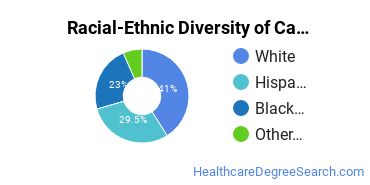Career School of NY Healthcare Programs
Located in Staten Island, New York, Career School of NY is a private not-for-profit institution. Staten Island is a great location for students who prefer city over country life.
Featured schools near , edit
Where Is Career School of NY?

Contact details for Career School of NY are given below.
| Contact Details | |
|---|---|
| Address: | 350 St. Marks Pl, Staten Island, NY 10301 |
| Phone: | 718-420-6440 |
| Website: | careerschoolny.com |
How Do I Get Into Career School of NY?
You can apply to Career School of NY online at: www.careerschoolny.com/?p=register
Can I Afford Career School of NY?
Student Loan Debt
Almost 66% of college students who graduated with the class of 2018 took out student loans, but that percentage varies from school to school. At Career School of NY, approximately 71% of students took out student loans averaging $4,853 a year. That adds up to $19,412 over four years for those students.
The student loan default rate at Career School of NY is 2.1%. This is significantly lower than the national default rate of 10.1%, which is a good sign that you'll be able to pay back your student loans.
Career School of NY Undergraduate Student Diversity
Gender Diversity
Of the 50 full-time undergraduates at Career School of NY, 14% are male and 86% are female.

Racial-Ethnic Diversity
The racial-ethnic breakdown of Career School of NY students is as follows.

| Race/Ethnicity | Number of Grads |
|---|---|
| Asian | 0 |
| Black or African American | 13 |
| Hispanic or Latino | 13 |
| White | 24 |
| International Students | 0 |
| Other Races/Ethnicities | 0 |
Career School of NY Healthcare Concentrations
The table below shows the number of awards for each concentration.
| Major | Undergraduate Certificate | TOTAL |
|---|---|---|
| Medical Office Assistant/Specialist | 8 | 8 |
| Medical/Clinical Assistant | 0 | 0 |
| TOTAL | 8 | 8 |
References
*The racial-ethnic minorities count is calculated by taking the total number of students and subtracting white students, international students, and students whose race/ethnicity was unknown. This number is then divided by the total number of students at the school to obtain the racial-ethnic minorities percentage.
More about our data sources and methodologies.
